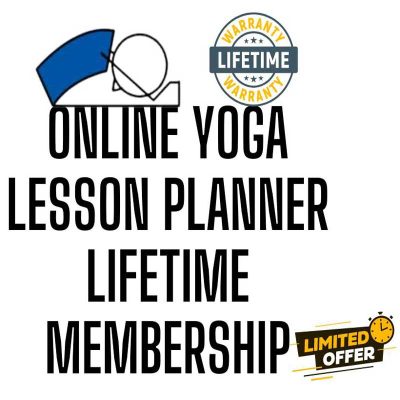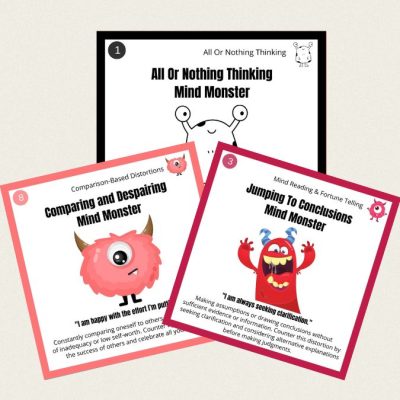Alice In Wonderland Kids Yoga Teaching Bundle: Includes Games, Video, & Downloadable Kids Pose Card
In Alice’s Adventures in Wonderland, the path is extremely unclear. But she manages to stumble her way along, managing fear, misunderstanding and chaos, figuring out her own skills, strengths and talents, and finding friends to help her when she needs it. She returns to find herself, asleep, seemingly unchanged – but changed entirely internally.
How amazing is this “story” for a yoga class!
Ready. Let’s unleash Alice in your next kids yoga class…
Step 1
Watch The Alice In Wonderland Pose Video
The Alice In Wonderland pose is 1 of 100’s of poses in the Drag & Drop Kids Yoga Drag & Drop Lesson Planner.
http://youtu.be/_WbMyQbTRzc
Step 2
Download The FREE Alice In Wonderland Pose Card
Teaching kids yoga with “downloadable yoga cards” makes life a lot easier for you, and more fun for your students. You can download and print the FREE Alice In Wonderland Pose Card below (right click and save). Members get access to 100+ downloadable kids yoga cards.
Step 3
Choose One Or More Alice In Wonderland Yoga Games
60 Second Yogi Pose Challenge
Download the Alice In Wonderland card. Take the “card” with you to class as a fun teaching aid. If you’re a member, you have access to 100+ downloadable cards. Download and print several of them. And during class, you could have a “Yoga Card Game” where you ask the kids to pick one of the “cards”. Spend 60 seconds per card.
Become The Teacher
Alice’s is sometimes the instructor, sometimes the student. Ask your students to become the instructors by getting in pairs. Partner A does a pose and partner B follows along.
Figure Things Out On Your Own
Alice is rarely aided by the creatures she meets. Whereas in a tale of Grimms or Andersen or John Ruskin, the protagonist’s meeting with a helpful bird or beast would signal his or her charity toward the world or nature. In Alice in Wonderland, unlike other fairy tales, the story represents a child’s true progression through life. In real life, a child has to figure things out on their own.
Ask students to come up with poses for an “Alice In Wonderland Yoga Adventure” by following the steps below..,
Step 1
Fold an A4 piece of paper in half and then fold again. Cut out with scissors.
Step 2
Write the names of Alice In Wonderland Characters (optional: draw a stick figure drawing of each character)
- Bill The Lizard
- Caterpilla
- Cheshire Cat
- Dodo
- Duchess
- Duck
- Frog Footman
- Jabberwock
- King Of Hearts
- Knave Of Hearts
- March Hare
- Queen Of Hearts
- Mock Turtle
- The Dormouse
- The Mad Hatter
- White Rabbit
Step 3
Pick a card and ask your students to come up with a pose for the character.
Step 4
When you’ve come up with a pose for the character, practice it for 60 seconds.
Step 5
Repeat steps 3 and 4 until you’ve gone through all the characters.
Good Choices – Bad Choices
In sociology, there is a stage called transitional adulthood. This is a period where young adults find themselves…young adults gradually ease into responsibilities …they become serious. By the end of the story, Alice learns to deal with her problems and regains sight of her identity. The Queen, who loses her temper and wants to kill Alice, is the obstacle that finally helps Alice to become an adult. To leap over this obstacle, she reaches into her pocket to find a mushroom from earlier, eats it, and grows to an enormous size. This most represents how she is facing her fear and taking on responsibility, or “growing up.” Alice in Wonderland is a perfect example of childhood through adolescence. Just as a child’s life is filled with good and bad choices, Alice’s is, too. As most do, she learns from her experiences and ultimately becomes more mature—emotionally, in how she deals with her problems, and in the way she perceives different situations, all of which are encompassed in the progression of a child.
When “growing up”, you need to start understanding the difference from “good” and “bad” choice.
Play the “Good Choice – Bad Choice” Game….
Step 1
Get everyone in a circle.
Step 2
Print out and cut up the following statements and place in a bowl (you can also come up with your own)
- You take your brother/sister’s toy without telling them
- You go out to play without asking your parents
- You walk away when someone tries to start a fight with you.
- You stand up for yourself
- You call your friends names like ugly or stupid
- Tell your family that you love them
- Doing your homework and handing it in on time
- Keeping a promise
- Doing something that your parents have told you not to do
- Staying up past your bed time
- You get angry at your mum because she didn’t buy you something you wanted
- You give up your seat on the bus for an older person to sit down
- Giving some money to charity
Step 3
Have children decided if the statement is a good choice or bad choice.
Frowning Queen
The Queen frowns like a thunderstorm as she and Alice play croquet. Ask Kids to frown as hard as they can like the grumpy Queen, and then smile as hard as they can…this is a great face stretch and usually turns into a bit of laughter yoga.
The Rabbit Hole
In Alice’s Adventures in Wonderland, the act of going down a rabbit hole is a metaphor for exploring the new and unknown. Ask kids to go into rabbit pose.
Unclear Path
In Alice’s Adventures in Wonderland, the path is extremely unclear. But she manages to stumble her way along, managing fear, misunderstanding and chaos, figuring out her own skills, strengths and talents, and finding friends to help her when she needs it. She returns to find herself, asleep, seemingly unchanged – but changed entirely internally. For 5 minutes, ask students to come up with their own yoga poses (without any instruction from you). You can walk around the class giving “praise” and “adjustments”.
Who Are You?
Caterpillar asks Alice, “Who are you?” This is the ultimate quest of every human being. Alice perspective keeps changing as she sometimes becomes big and sometimes small. Alice says, “It would be so nice if something made sense for a change“. She is searching for permanence (which we are searching for).
You can play the “Who Are You” mantra game…
Step 1
Fold an A4 piece of paper in half and then fold again. Cut out with scissors. Or use cards with bright colours.
Step 2
Write a “mantra” (see below and pick ones you like) on each cards. It is so important to help children establish a positive attitude to life. By doing so you can help children to internalise positive beliefs, which allows them to develop confidence and a healthy dose of self-esteem. To get kids motivated to say the positive mantras is telling them that the mantras are “magic mantras”, that become true when repeated often enough (e.g. 20 times in a row).
- I am loved.
- I listen to my heart.
- I am safe.
- I am helpful.
- I am friendly.
- Every problem has an answer.
- I am kind.
- I can do it.
- I play well with others.
- I’m intelligent.
- I learn from my mistakes.
- I act responsibly.
- I am calm.
- I love myself even though I sometimes fail.
- Every day brings new opportunities.
- I accept and love myself.
- I am kind.
- I am relaxed.
- I have faith in myself.
- I am brave.
- I have trust in myself.
- I am generous.
- I am loving.
- I meet great decisions.
- I am kind to all.
- I am protected.
- Whatever I do, I give my best.
- I am exactly where I need to be.
- I trust in my abilities.
- I solve problems.
- I am unique.
- I have lots of energy.
- I am peaceful.
- I can become whatever I want to be.
- I embrace change.
- I make friends easily.
- My intuition is a guide showing me the right direction.
- I accomplish great results.
- I have a beautiful imagination.
- I am confident.
- I welcome the unfoldment of events.
- I am caring.
- I find creative solutions to my problems.
- I think positive.
- I am thankful.
- I am courageous.
- I am gentle with myself and others.
- I am whole.
- I enjoy testing new ideas.
- I have courage.
Step 3
Draw or glue some kind of an inspiring picture on the cards (e.g. stars, flowers, trees or animals).
Step 4
Get kids involved in creating the Mantra Cards.
Step 5
Pick a card and ask your students to repeat the mantra silently, then out loud.
Step 4
Repeat step 5.
Alice In Wonderland Pose Teaching Tips
Standing with arms over head
Teaching Directions
Imagine you’ve got a magic potion given to your by Alice In Wonderland. Drink. Wow! You’re becoming taller and taller (stretch hands over head).
Sanskrit
Tadasana
Benefits: Physical
- Balance
- Calming
- Improves posture
- Strengthens legs
- Engages core
Benefits: Emotional
- Release unfounded fears by exploring the new and unknown.
Preparation Poses
- Mountain
Follow Up Poses
- Standing backbend
- Tree (hands by sides)
- Tree (hands in prayer mudra over heart)
- Tree (hands over head)
- Down Dog
Modifications
- Hands in prayer behind back
- Hands in prayer over heart chakra
- Eyes closed
- Hands over head with palms together
- Hands over head with arms wide apart
- Samashthiti (feet together)
- Mountain pose variations
Counter Pose
- Forward bend
Kids Yoga Teacher Lesson Plan Kit
Life can be hard, but kids yoga lesson planning is always easy with the Kids Yoga Teacher Lesson Plan Kit.









